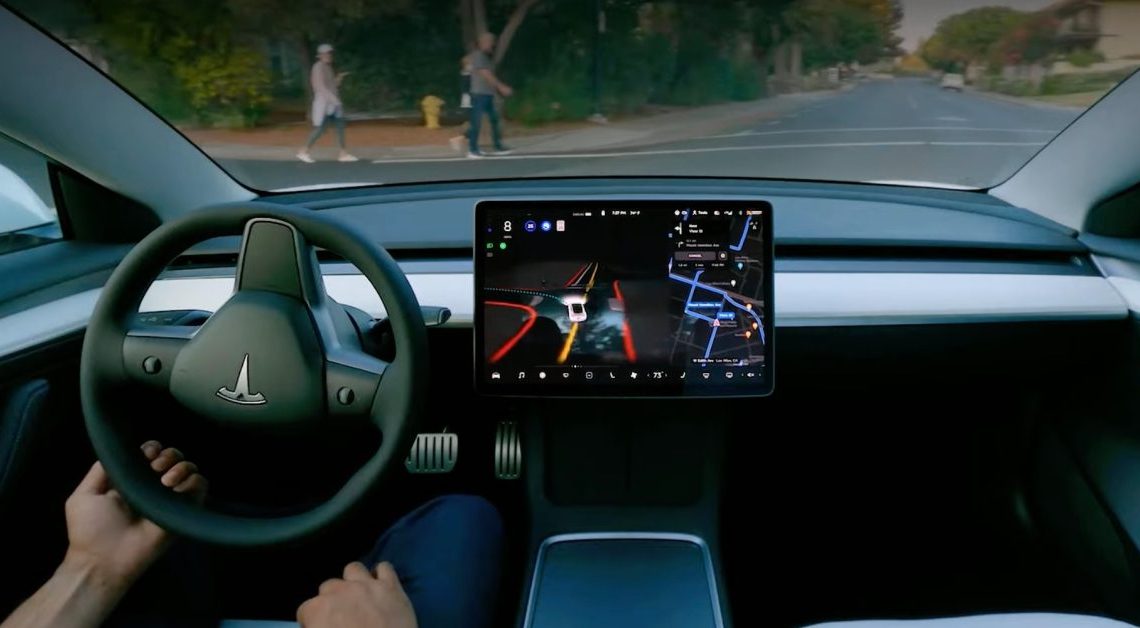
Tesla has moved its safety monitor from the passenger’s seat to the driver’s seat in its ‘Robotaxi’ service in Austin, Texas, as it expands onto highways.
However, the timing may be more closely tied to regulations.
When Tesla launched its ‘Robotaxi’ service in Austin, we warned that the move was more about optics than safety, as the automaker basically deployed its ‘Supervised Full Self-Driving’ (FSD) system with employees supervising from the front passenger seat, with a finger on a kill switch.
In and of itself, Tesla’s Robotaxi service in Austin shouldn’t be impressive to anyone familiar with FSD, which has been around for almost 5 years.
FSD is capable of performing virtually all tasks related to driving, but it is still considered a level 2 driver assistance system because it can’t perform those tasks reliably over tens of thousands of miles, which is why Tesla maintains that the driver is always responsible for the vehicle.
In its Robotaxi service, which utilizes Tesla’s own fleet rather than consumer vehicles, Tesla employees serve as supervisors. For the first two months of the service, the supervisors were seated in the front passenger seat with a finger ready to press a button that would bring the vehicle to a stop.
This was undoubtedly less safe than if they were seated in the driver’s seat with more controls, but it didn’t add a ton of risk as the service only operated at lower speeds on surface streets.
However, Tesla expanded its Robotaxi on highways on September 1st, and it decided to move the safety monitor to the driver’s seat:
Many are assuming that Tesla decided to move them to the driver’s seat due to the added risk that comes with driving at higher speeds on highways, but that might not be the only reason.
The timing also aligns with the new Texas Senate Bill 2807, which now governs the deployment of automated driving systems in the state, coming into effect on September 1st.
Prior to this law, Texas was relatively permissive regarding autonomous vehicle testing under earlier statutes, such as SB 2205 (2017), which allowed operation without a human driver as long as vehicles complied with traffic laws, had recording devices, and met federal standards.
However, SB 2807 introduces stricter oversight for truly driverless operations, including requirements for safety data reporting, first-responder interaction plans, and potential revocation of authorization if safety standards aren’t met.
Companies must also demonstrate that their systems can achieve a “minimal risk condition” (e.g., safely pulling over) in case of failure and need to qualify as a level 4-5 autonomous driving based on the SAE standard.
To achieve level 4-5, there can be no human oversight.
Therefore, by moving the supervisor into the driver’s seat, now serving as a safety driver, the system reverts to level 2, allowing Tesla to continue operating its “robotaxi” without achieving level 4 autonomy.
Author: Fred Lambert
Source: Electrek
Reviewed By: Editorial Team



